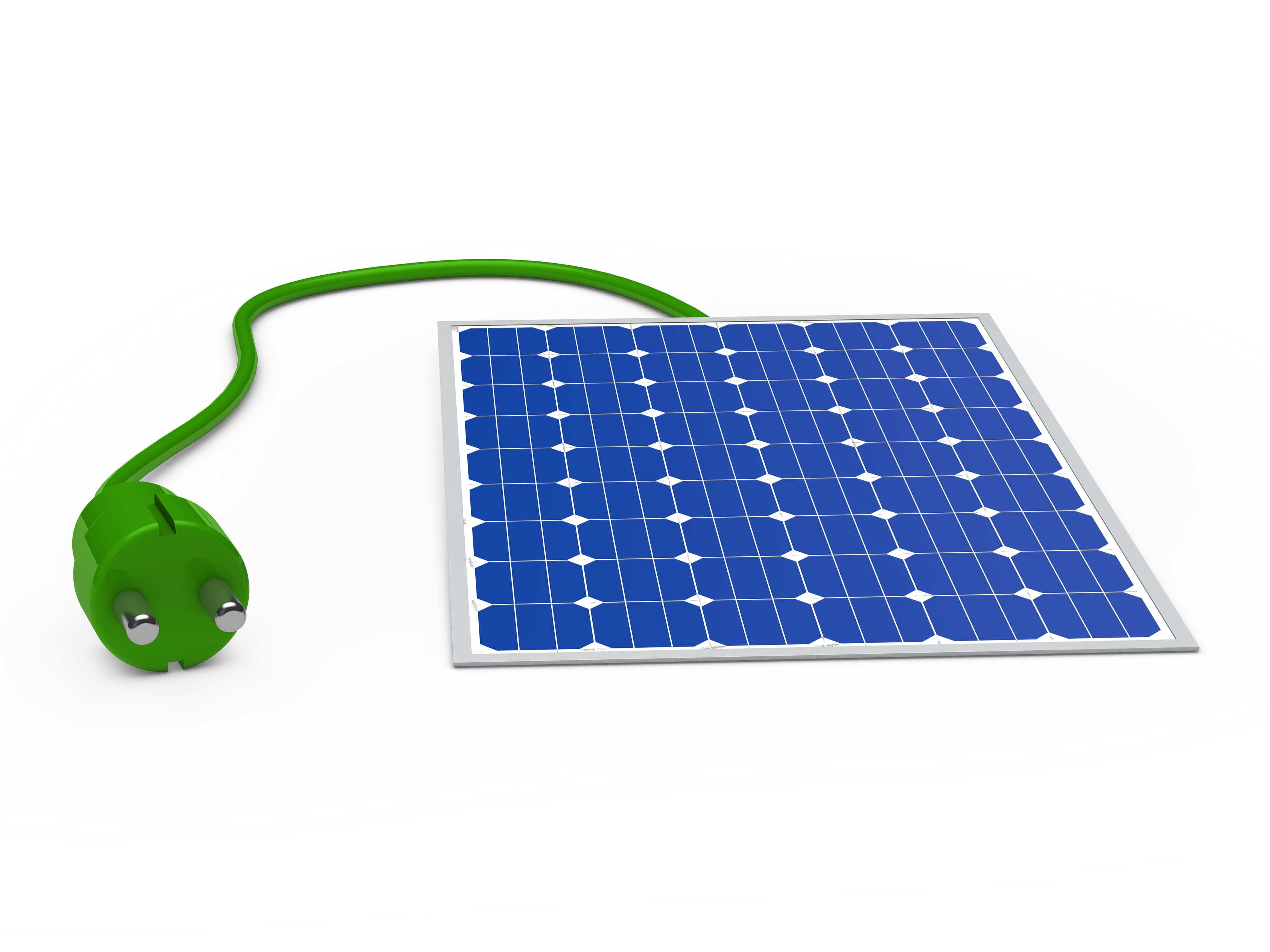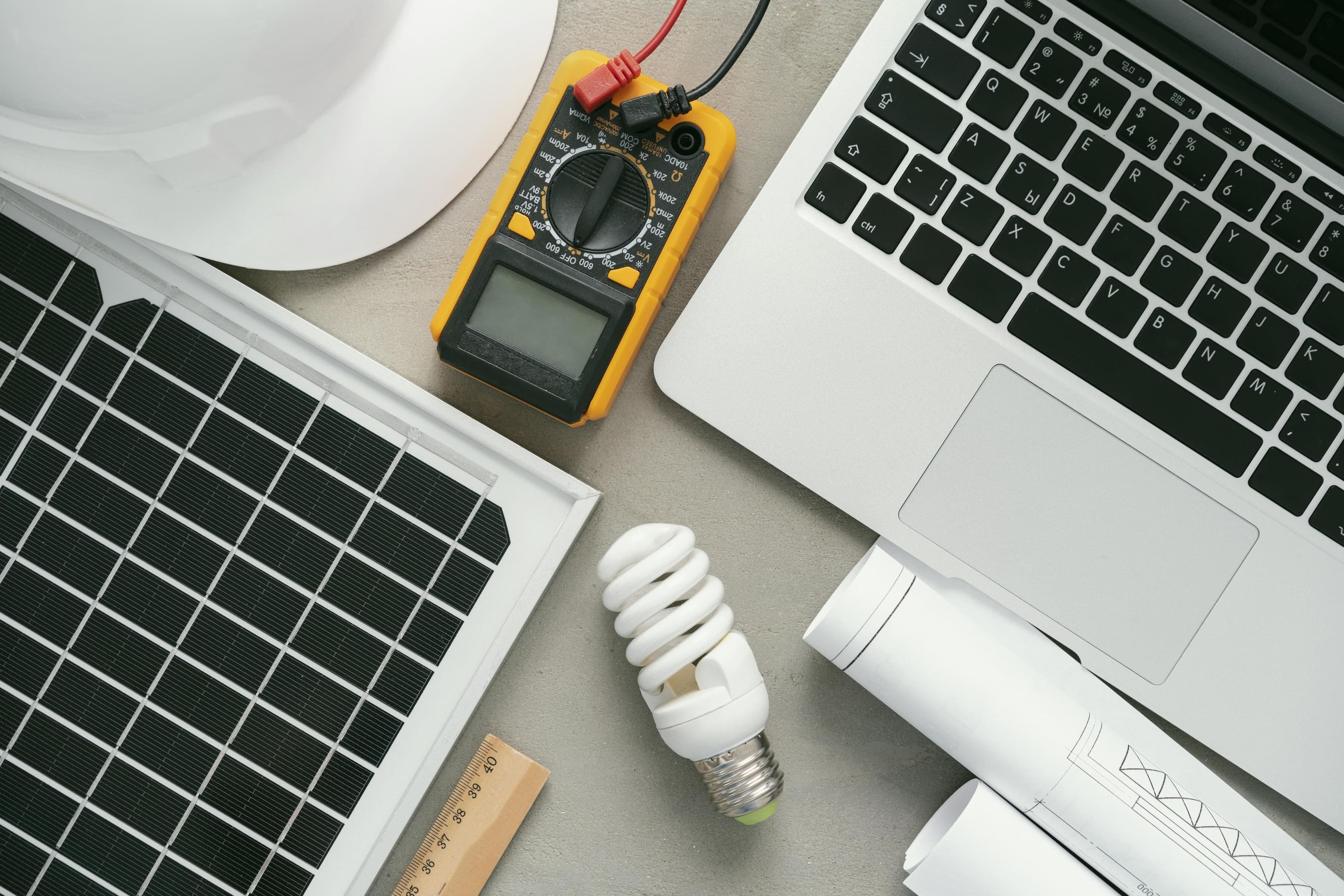

A solar single line diagram (SLD) is a simplified electrical schematic that shows how all components in a solar PV system connect together, including solar panels, inverters, disconnects, circuit breakers, and the utility grid connection. Unlike complex wiring diagrams, an SLD uses a single-line format to provide a clear, high-level view of your entire solar electrical system.
You need a solar single line diagram because: It's required for permits and NEC 2023 code compliance in most jurisdictions It prevents costly installation errors by providing installers with a clear blueprint It serves as a troubleshooting reference for maintenance and system upgrades It ensures proper wire sizing, breaker ratings, and safety configurations It facilitates communication between engineers, installers, and inspectors
Key components shown in an SLD include: electrical connection points (AC/DC), inverters, disconnects, circuit breakers, string configurations, grounding systems, and battery storage integration (if applicable). Engineers and installers use this diagram throughout the design, installation, and maintenance phases to ensure safe, efficient, and code-compliant solar installations.

A solar single line diagram represents a streamlined schematic illustration of a solar energy system's electrical configuration. It demonstrates the connections between electrical components, including panels, inverters, disconnects, and the utility grid, using a single-line format instead of the multiple parallel lines found in conventional wiring schematics.
While standard wiring diagrams can become overwhelming with detailed wire and connection specifications, the SLD delivers a comprehensive overview that makes complex electrical systems easy to grasp. The diagram emphasizes essential components and their relationships, enabling engineers and installers to comprehend system functionality quickly. For a deeper understanding of electrical principles in solar projects, review our guide on mastering electrical fundamentals.
The solar SLD acts as the foundation of electrical design for PV systems. It delivers a visual blueprint of the complete electrical infrastructure, enabling engineers to: Chart connections linking solar panels, inverters, batteries (when included), disconnects, and utility grid connections Pinpoint essential components including fuses, circuit breakers, and electrical protection mechanisms Guarantee system efficiency by ensuring optimal configuration for maximum energy production
This organized layout assists engineers in selecting proper wire gauges, breaker specifications, and system architecture, securing both safety standards and optimal performance. Whether you're planning a residential solar design or commercial solar design, the SLD remains central to project success.

A primary function of solar single line diagrams is verifying that solar systems comply with local electrical codes and NEC standards. Throughout the United States, the NEC establishes protocols for safe electrical installation procedures, including solar energy system-specific requirements.
NEC 2023 specifies requirements for wiring practices, grounding procedures, and overcurrent protection, all elements that must be precisely documented in the SLD. Regional regulations frequently mandate particular safety protocols, such as solar panel positioning relative to structures, approved inverter types, and additional specifications. For California-specific requirements, consult our article on what permits are required to install a solar system in CA. The SLD integrates these guidelines to guarantee adherence to both national and regional codes. Resources like the U.S. Department of Energy's solar blog and Penn State Extension's ordinance considerations offer valuable insights into evolving solar regulations.
Utilizing an SLD ensures your solar system satisfies all local, state, and federal requirements, preventing potential penalties or installation delays. Professional solar permit expediting services can streamline this compliance process significantly.
Beyond initial installation, a solar SLD remains valuable throughout the system's lifecycle. As time passes, systems may need troubleshooting or maintenance, particularly as components age or new technologies get added. The SLD functions as a reference document for problem identification and system modifications.
Diagnostics: When malfunctions occur, the SLD aids in locating where problems may exist within wiring or specific components. Understanding DC connector risks in PV systems is crucial for preventing potential fire hazards during troubleshooting.
System Expansions: When incorporating additional panels or integrating energy storage systems like batteries, the SLD can be revised to show these modifications, enabling engineers and installers to implement swift and precise adjustments. For those considering battery backup systems, off-grid solar system design principles often apply.
Routine Upkeep: An current SLD guarantees that maintenance technicians can readily access and service components during scheduled maintenance visits. Industry publications like EnergySage and Solar Energy International provide ongoing maintenance best practices.

To develop a precise and functional solar single line diagram, incorporate these elements:
Understanding solar interconnection methods is essential when documenting electrical connection points in your SLD, as these determine how your system interfaces with the utility grid.
Creating an effective solar SLD requires:
Adhering to Standards and Regulations: Verify your diagram meets NEC requirements and local codes. Organizations like UMass Clean Energy Extension offer community planning resources.
Utilizing Appropriate Design Software: Employ software such as AutoCAD or dedicated solar design platforms that enable creation of accurate and clear diagrams. Our solar design services utilize industry-leading tools for precision.
Expert Collaboration: Partner with certified engineers to guarantee design accuracy, especially for sophisticated systems incorporating batteries or grid integration. Solar Permit Solutions specializes in creating code-compliant SLDs for projects of all sizes.

While SLD creation might appear simple, several challenges exist:
Complicated Wiring Systems: Large-scale solar installations with multiple inverters and battery storage can generate intricate wiring schematics. Divide these into manageable sections and implement clear labeling practices. Resources from Renewable Energy World and CleanTechnica showcase industry approaches to complex designs.
Unclear Component Identification: Verify each component receives clear labeling with distinct identifiers to prevent confusion during installation. Proper documentation also helps when considering structural engineering requirements for rooftop solar.
Maintaining SLD Currency: As systems develop or grow, updating the SLD to reflect new components and wiring modifications is crucial. Overlooking updates can result in system inefficiencies and compliance problems.
Here are scenarios where solar SLDs prove essential:
Residential PV Installation: A standard residential SLD displays connections between solar panels, an inverter, a disconnect, and the utility connection. This straightforward layout assists installers in ensuring correct wiring and safety protocols. Before starting your project, understand how much a home solar system costs in 2025. Home improvement resources like Young House Love and Green Building Advisor also provide homeowner perspectives on solar installations.
Commercial PV Installation: Larger commercial installations demand more detailed SLDs, frequently incorporating battery storage, multiple inverters, and advanced monitoring systems. The SLD reduces this complexity, making the system more accessible to understand and maintain. When weighing options, consider professional solar panel installation vs DIY approaches.
A solar single line diagram is a vital instrument for both the design and installation of photovoltaic systems. By delivering a clear, simplified representation of the system's electrical components, the SLD guarantees that installations are safe, efficient, and code-compliant.
Engineers and installers who utilize high-quality SLDs reduce the risk of errors, decrease installation time, and enhance system performance. Whether you're installing a compact residential system or a substantial commercial setup, the solar SLD is an essential element that contributes to project success. For expert guidance and comprehensive solar design support, explore our blog or contact us directly. Additional industry insights can be found at The Energy Mix.
Why is a Solar Single Line Diagram Important?
A solar SLD is vital for guaranteeing the safe, efficient, and compliant design and installation of solar systems. It functions as a comprehensive blueprint, simplifying complicated electrical layouts and verifying that all components are properly wired and meet electrical codes.
Is the Solar SLD the Same as a Wiring Diagram?
No, a wiring diagram delivers detailed wiring specifications for each individual component, while the solar SLD provides a simplified, comprehensive overview of the system's configuration. The SLD concentrates on key components and their connections, making it more accessible to understand and utilize.
Who Needs to Use a Solar Single Line Diagram?
Engineers, electricians, and solar installers utilize the SLD throughout the design, installation, and maintenance stages. It assists them in verifying that all electrical connections are accurate, safe, and compliant with national and local regulations.
Can I Use a Solar SLD for System Maintenance?
Absolutely! A properly maintained and current SLD is an essential resource for system diagnostics, upgrades, and maintenance. It enables technicians to rapidly identify and address issues within the system.
How Often Should I Update My Solar SLD?
You should revise your solar SLD whenever you implement significant system modifications, such as adding panels, upgrading inverters, or incorporating battery storage. Maintaining an updated SLD ensures the system stays compliant and efficient.
We are dedicated to providing top-notch solar permit services to homeowners, business owners, DIY, and solar installers. Contact us today.